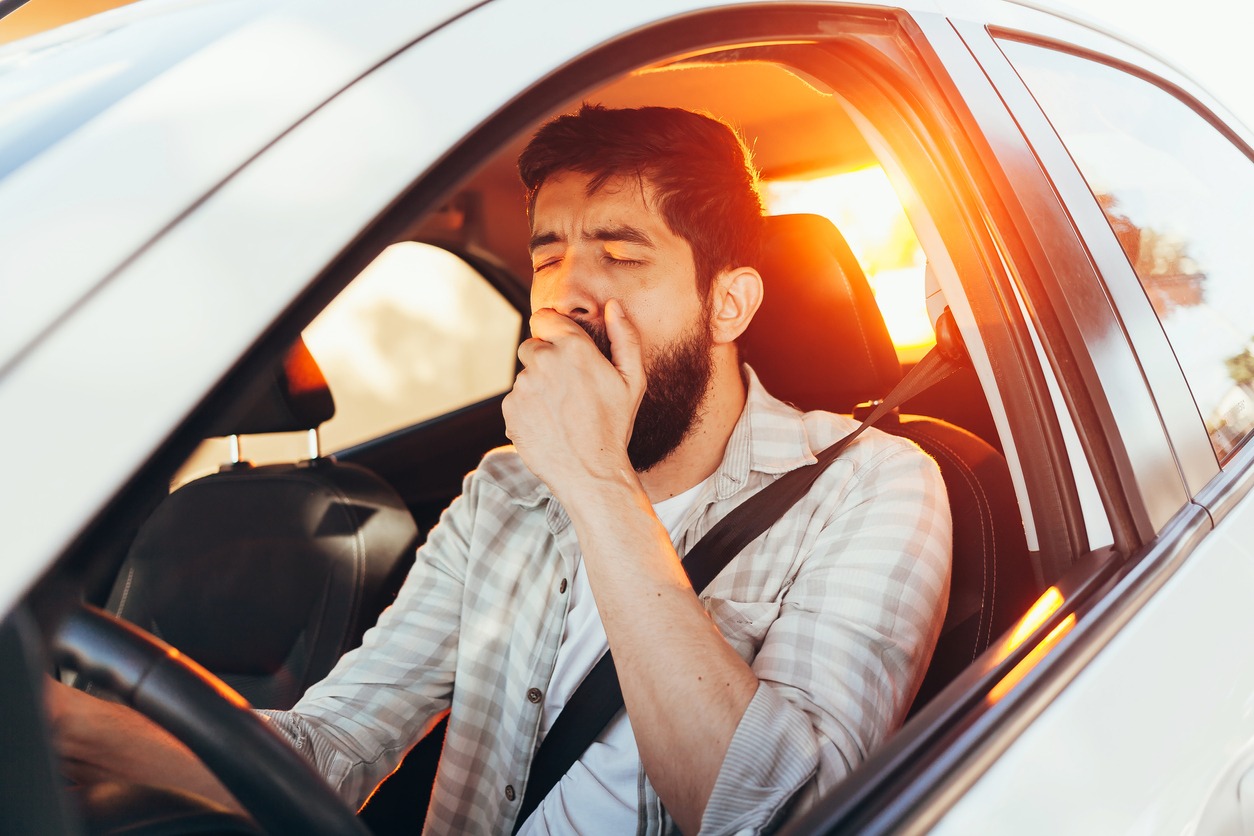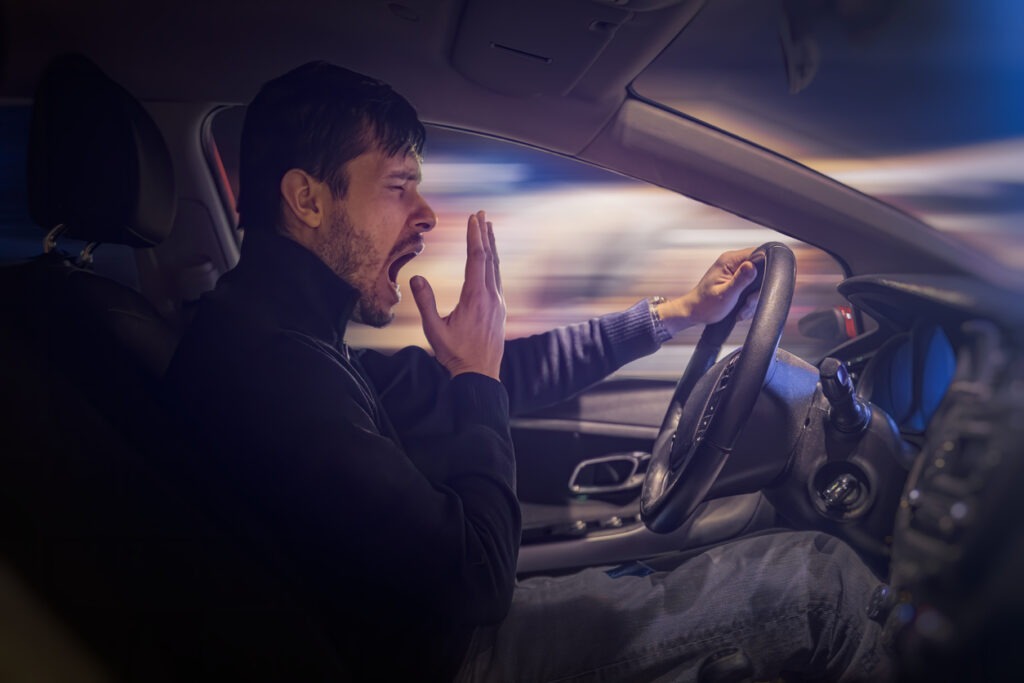Operating a car or any motor vehicle when fatigued and sleepy can affect anyone who gets behind the wheel. Driving while drowsy is a dangerous combination. Fatigue-related accidents are quite horrific as the driver completely loses consciousness and control over the wheel. It increases the risk of accidents, leading to many injuries and fatalities each year. Falling asleep behind the wheel is obviously dangerous, but being sleepy can also affect the ability to drive safely.
Drowsiness due to fatigue or lack of sleep can slow your reaction time if you need to brake or steer suddenly, slow your reaction time, or affect your ability to make good decisions.
If you think that fatigue is the major problem for only long-distance drivers – it is not quite the case. People don’t basically become fatigued from driving. When they get behind the wheel, they are already tired from long hours, working load, lack of sleep, etc.
How Common is Drowsy Driving?
There’s no exact measure on how to say how common it happens, but research indicates that it’s disturbingly common. In 2005, the National Sleep Foundation’s Sleep in America Poll found that 60% of adult drivers reported driving while drowsy in the past year [1].
Also, the Centers for Disease Control and Prevention (CDC) indicated that one in every 25 adults has fallen asleep behind the wheel in the past month [2].
How Dangerous is Drowsy Driving?
We all agree that drunk driving is detrimental, but drowsy driving is just as dangerous. The National Highway Traffic Safety Administration (NHTSA) estimates that around 2.5% of fatal and 2% of non-fatal motor accidents are related to fatigue. Experts believe that these numbers are a vast underestimation of the actual impact drowsy driving can cause since fatigue is not often noted on police reports in many cases. Fatigue is harder to spot after an accident because there’s no test for sleepiness like there’s for drunk driving.
Instead, the number of fatal crashes due to sleepiness is probably closer to the CDC’s estimate of 25%. According to the CDC, driver fatigue plays a role in up to 7,500 fatal motor vehicle crashes annually in the United States [2].
Drowsy driving is one of the major causes of motor vehicle collisions. In 2017, drowsy driving was the cause of 91,000 crashes, resulting in roughly 50,000 injuries and nearly 800 deaths, according to the National Highway Traffic Safety Administration (NHTSA). In 2020, there were 633 fatalities caused by drowsy driving, based on police reports [3].
This data most likely underestimates the impact of drowsy driving because it’s impossible to definitively determine if fatigue caused an accident, especially after fatal car crashes. Research estimates that about 21% of fatal car crashes involve a person driving while fatigued or drowsy [4].
Drowsiness impairs drivers in many ways, impairing their judgment and making them less attentive. The severity of these impacts varies. For instance, when you’re tired, you may zone out and be slightly less aware of your surroundings. Drivers who are fatigued tend to go off the road and roll over and don’t usually do anything to avoid it, like steering and braking.
Fatigue impairs a person, making them less attentive to their surroundings and more easily distracted. It slows their reaction time, making it harder to avoid dangers on the road. Insufficient sleep worsens decision-making, leading a driver to take risks behind the wheel.
Causes of Drowsy Driving
Multiple factors can play a role in drowsy driving, such as:
- Sleep disorders – Many sleep disorders, such as sleep apnea and insomnia, can cause a person’s sleep to be interrupted and less restorative. When left untreated, many sleep disorders can cause drowsiness during the day.
- Lack of quality sleep – Sleep deprivation is the leading cause of excessive sleepiness during the daytime, which can induce unintentional naps and other dangerous driving behavior. Adults need between 7-9 hours of sleep every night, but a significant number of adults fail to get this amount of sleep. People who sleep for six hours or less a night may unintentionally doze off at random times of the day.
- Time of day – Car accidents caused by drowsy driving usually occur from midnight to around 6 AM or in the mid-afternoon. These are times when most people are usually sleepy.
- Medications – Some medications for different conditions can cause drowsiness as a side effect. Sleep aids, prescription drugs, OTC meds, and dietary supplements are taken at night may cause lingering grogginess the next morning.
- Alcohol – Drinking alcohol may cause sleepiness while affecting reaction time and decision-making. As much as possible, do not drink if you’re about to drive.
Drowsy driving and driving when tired can affect anyone who didn’t sleep properly, but certain people are at higher risk of car crashes of this cause, including:
- People with sleep problems, including insomnia and other sleep disorders
- People who drive as a job, like bus drivers and truckers
- People who work night shifts, irregular shifts, or long hours
- Teenagers and young adults who have less driving experience and high rates of insufficient sleep
- People who regularly take medicines that make them sleepy
Watch out for fatigue. If you are tired, it may cause you to be sleepy behind the wheel. Symptoms of fatigue include:
- Stiffness and cramps
- Loss of motivation
- Yawning
- Heavy eyes
- Lack of concentration
- Impaired driving performance
What are Anti-Fatigue Devices for Driving?
Fortunately, anti-fatigue devices are available to ensure you drive safely. Many large companies are using technology to help prevent collisions. There are two types of anti-sleep alarms: the first one is built right into the car using sensors, cameras, and other technology to discern fatigue, while the second type fits right over the driver’s ear and sounds an alert if the sensor sees signs of drowsiness.
Here are some anti-fatigue devices you can use for driving:
1. In-car systems
These are anti-fatigue devices installed in cars to prevent crashes due to driver fatigue. These recently-developed features can add thousands of dollars to a car’s starting price, but they sure help prevent deadly fender benders. Some of them include the following:
A. Collision warning systems – It’s the most common anti-fatigue in-car systems used in the car market. It uses cameras or lasers to detect objects in the driver’s path and compute time to collision. These systems alert the driver by flashing lights, beeping, and in some cases, even braking the driver.
B. Road departure warning systems – Among the newer technologies in automobiles include road departure warning systems that detect when drivers are about to cross a lane and give off a warning tone. Studies have found that these systems can reduce the rate of drivers going off the road by 40% [5].
Volvo and BMW cars use the driver’s steering adjustments to measure sleepiness. Drivers may start steering less due to fatigue, and the car alerts them in the form of a beep or a flashing sign on the dashboard.
C. In-car sleep sensors – Some high-end car manufacturers add sleep sensors to their cars right at the factory. A few of them include the following:
- Lexus – In some latest Lexus cars, they added a camera in the dashboard that tracks the driver’s face rather than the vehicle’s behavior, alerting the driver if their movements indicate sleep.
- Mercedes-Benz – Mercedes-Benz Attention Assist utilizes the engine control unit of the car to monitor any changes in steering. It also detects changes in the driving habit and alerts the driver accordingly.
- Volvo – Volvo offers Driver Alert Control, a lane-departure system that monitors and corrects the vehicle’s position on the road, alerting the driver if it detects any shifting and drifting between lanes.
- Saab – Saab uses two cameras in the cockpit to monitor the eye movement of the driver, alerting them with a text message in the dash. This is followed by a stern audio message if they look sleepy.
2. Anti-sleep alarms
Besides systems built into cars, there are gadgets that can help a tired driver drive safely. If your car isn’t equipped with in-car alarm systems, these are the gadgets you may wear so you can prevent falling asleep by the wheel.
There are anti-fatigue alarms that fit into the driver’s ear and beep or vibrate when it senses the nodding of a sleepy head. There are other devices, such as Bluetooth headsets, drivers can wear that alert them when they are sleepy based on their blinking patterns and body movements.
Besides these, there are also dashboard devices available as a mobile app that gauges the user’s level of fatigue based on different factors like weight, age, and the average amount of sleep a night. If it gauges that you’re likely to be sleepy, it tries to intermittently revive you by asking you to touch the device.
How to Avoid Drowsy Driving
In addition to using driver alarm systems, here are steps that drivers can take to reduce drowsiness.
A. Before driving
- Get a good night’s sleep. Get plenty of sleep the night before your trip. Ideally, you should also sleep well for multiple nights before you drive.
- Plan your driving schedule. As much as possible, break your tip into segments, and don’t depend on very long days of driving.
- Make time to rest. Plan multiple stops along the way so you can recharge.
- Bring a travel companion. Drowsy driving typically occurs when people are driving by themselves. If possible, have someone who can join you to talk to you and keep you awake. Better yet, get a companion who can take turns with you on driving so you can rest, too.
B. While driving
- Watch out for warning signs. If you notice feelings of drowsiness, look for an opportunity to stop and rest. It’s always better to be safe than sorry, so don’t try to power through if you know you’re really tired.
- Drink caffeinated drinks. Caffeine is a stimulant that can keep you alert for a few hours. However, this isn’t a cure-all because caffeine’s effect will eventually wear off, and you’ll likely get sleepy again.
If you do feel sleepy, don’t put yourself in the driver’s seat in the first place because the consequences are very severe.
If a senior is going to drive or ride a car, you may check our list of Useful Car Aids for Seniors for the best tips and recommendations to keep them safe and comfortable.


